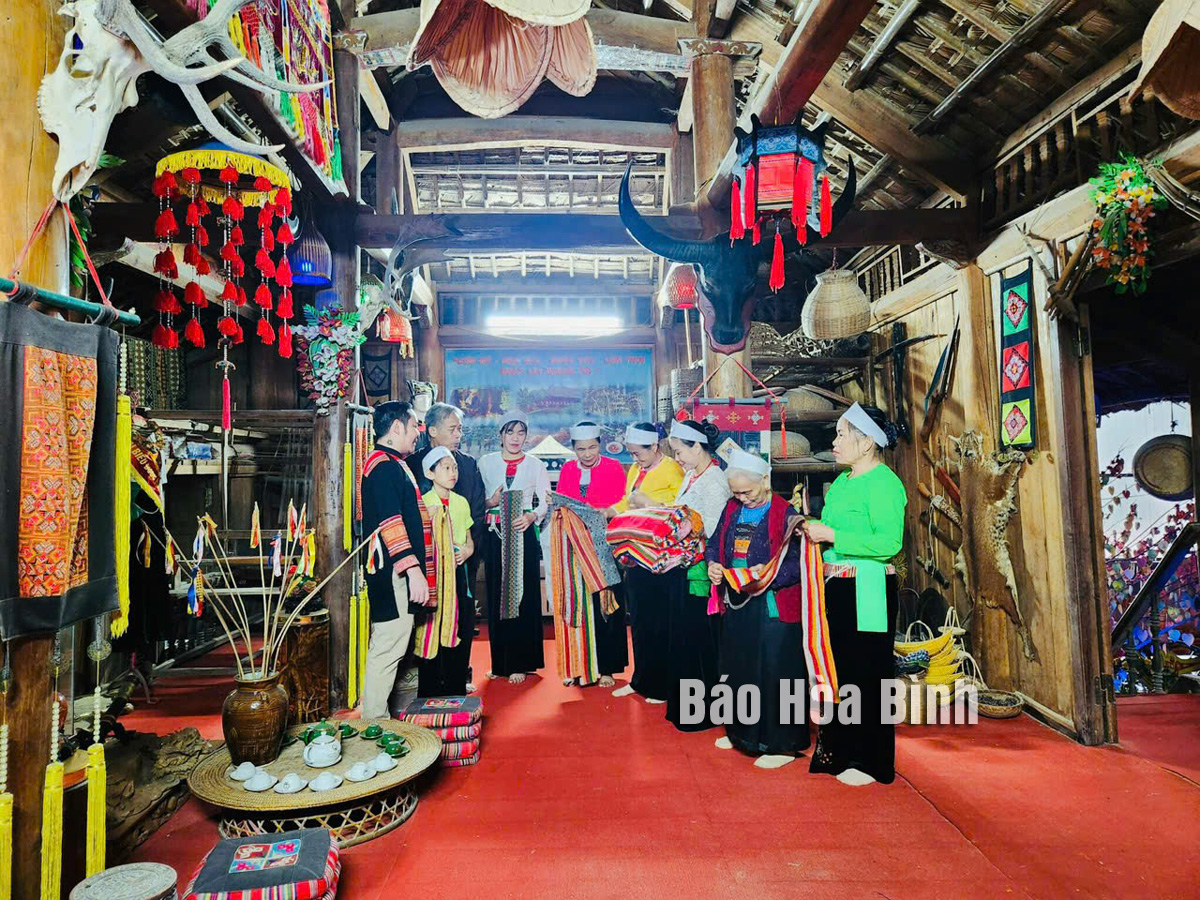
With its advantages in geography, natural landscapes, and convenient transportation, Lac Thuy district in the northern province of Hoa Binh has huge potential to develop tourism, especially culture and spiritual tourism, eco-tourism, and festival tourism.
Since the Law on Cultural Heritage was enacted,
the district has worked hard to prohibit actions that infringe upon cultural
heritage, distort, damage, or pose risks to cultural heritage, illegally
excavate archaeological sites, construct illegally, or encroach upon land
within historical-cultural relics and scenic spots.
The Muong culture heritage conservation club in Ba Hang Doi town has collected
and displayed over 2,000 items, including objects used in the daily life of the
Muong people.
Lac Thuy homes six national relic sites, 12
provincial-level relics, and 67 others that in the list requiring protection. In recent years, the locality has paid attention
to communication activities to raise public awareness of the importance of
cultural heritage conservation and promotion. The district People’s Committee has focused on
developing and scaling up models to conserve and promote the cultural heritage
values of local ethnic groups. The district maintains five clubs for conserving
and promoting the cultural values of the Muong ethnic group in Ba Hang Doi town
and the communes of An Binh, Phu Nghia, Hung Thi, and Thong Nhat. Additionally, there are 20 Muong gong
teams, eight poetry clubs, and 112 cultural performance teams in villages and residential
areas within the district.
Efforts to encourage the involvement of society
in conserving and promoting the values of cultural heritage have yielded
positive results. Through donation drives for artifacts for exhibition, the
family of patriotic bourgeois Do Dinh Thien donated a total of 62 artifacts
preserved and displayed at the Money Printing Factory relic site.
Nguyen Thi Thanh Tam, Director of the Culture
and Information Department of Lac Thuy district, said that the locality
identifies the conservation and promotion of cultural heritage values as an
important and regular task.
In the coming time, the district will continue
to enhance the effectiveness of state management in the work in accordance with
the decentralised management hierarchy, concentrating on outlining specific
programmes and projects.
With an increasingly vibrant and widespread emulation movement aimed at building cultured residential areas and cultured families, Yen Thuy District has been making steady progress toward improving both the material and spiritual well-being of its people, while fostering a civilized, prosperous, beautiful, and progressive community.
Once lacking recreational spaces and community facilities, Residential Group 2 in Quynh Lam Ward (Hoa Binh City) has recently received attention for the construction of a new, spacious, and fully equipped cultural house. The project followed the model of state support combined with public contributions in both labor and funding.
The "All people unite to build cultural life" movement, which has been effectively integrated with Kim Boi district’s socio-economic development goals, is fostering a lively spirit of emulation across local residential areas, hamlets, villages, public agencies, and enterprises. In addition, through the initiative, traditional cultural values are being preserved and promoted, while community solidarity and mutual support in poverty reduction and economic development are being strengthened.
A working delegation of the Hoa Binh provincial People’s Committee led by its Permanent Vice Chairman Nguyen Van Toan on June 11 inspected the progress of a project to build the Mo Muong Cultural Heritage Conservation Space linked to tourism services in Hop Phong commune, Cao Phong district.
Born and growing in the heroic land of Muong Dong, Dinh Thi Kieu Dung, a resident in Bo town of Kim Boi district, in her childhood was nurtured by the sweet lullabies of her grandmother and mother. These melodies deeply imprinted on her soul, becoming an inseparable part of her love for her ethnic group's culture. For over 20 years, this love for her hometown has driven Dung to research, collect, and pass down the cultural values of the Muong people to future generations.
In the final days of May, the Ethnic Art Troupe of Hoa Binh Province organized performances to serve the people in remote, mountainous, and particularly disadvantaged areas within the province. These were not just ordinary artistic shows, but they were the meaningful journeys aimed at spreading cultural values, enhancing the spiritual life of the people and contributing to the preservation of ethnic minority cultural identities.



